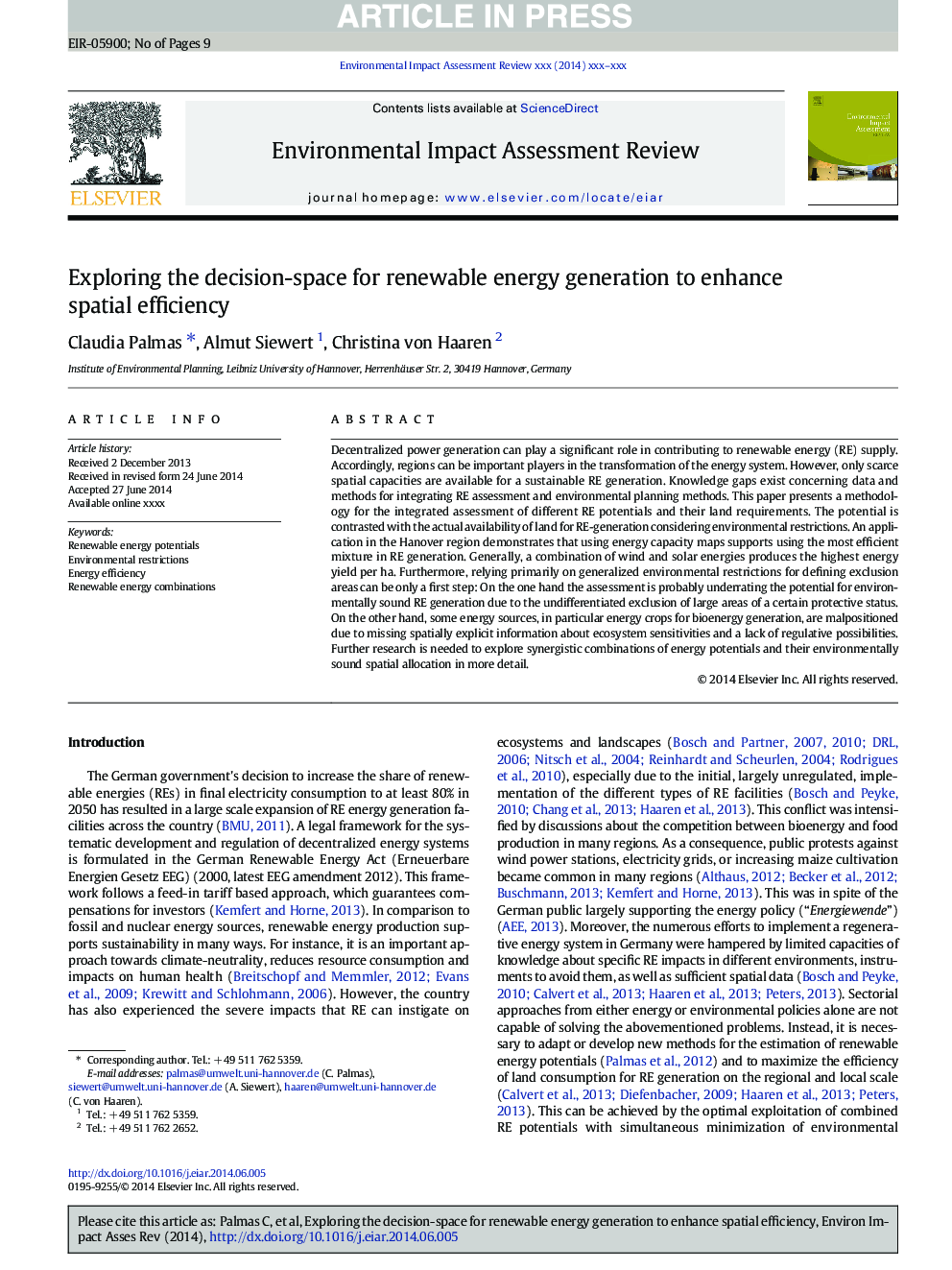| Article ID | Journal | Published Year | Pages | File Type |
|---|---|---|---|---|
| 7465310 | Environmental Impact Assessment Review | 2015 | 9 Pages |
Abstract
Decentralized power generation can play a significant role in contributing to renewable energy (RE) supply. Accordingly, regions can be important players in the transformation of the energy system. However, only scarce spatial capacities are available for a sustainable RE generation. Knowledge gaps exist concerning data and methods for integrating RE assessment and environmental planning methods. This paper presents a methodology for the integrated assessment of different RE potentials and their land requirements. The potential is contrasted with the actual availability of land for RE-generation considering environmental restrictions. An application in the Hanover region demonstrates that using energy capacity maps supports using the most efficient mixture in RE generation. Generally, a combination of wind and solar energies produces the highest energy yield per ha. Furthermore, relying primarily on generalized environmental restrictions for defining exclusion areas can be only a first step: On the one hand the assessment is probably underrating the potential for environmentally sound RE generation due to the undifferentiated exclusion of large areas of a certain protective status. On the other hand, some energy sources, in particular energy crops for bioenergy generation, are malpositioned due to missing spatially explicit information about ecosystem sensitivities and a lack of regulative possibilities. Further research is needed to explore synergistic combinations of energy potentials and their environmentally sound spatial allocation in more detail.
Keywords
Related Topics
Physical Sciences and Engineering
Energy
Renewable Energy, Sustainability and the Environment
Authors
Claudia Palmas, Almut Siewert, Christina von Haaren,
